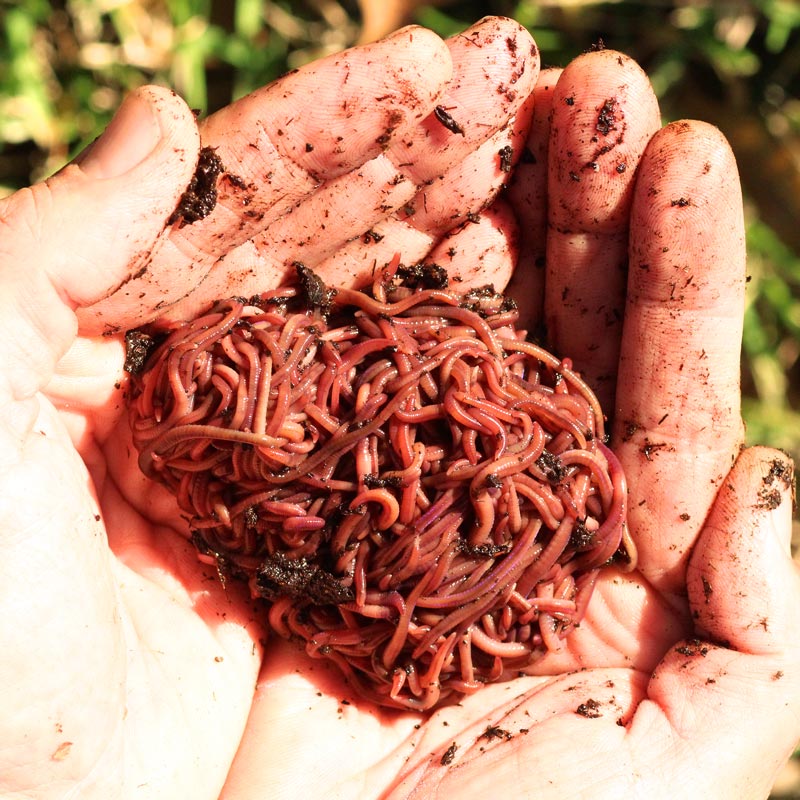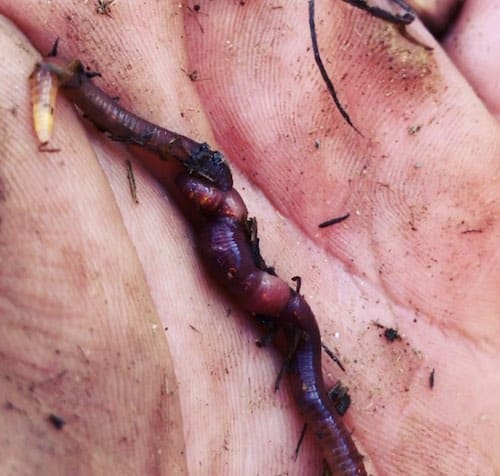Red Wiggler Worms - Effective Decomposers for Your Compost Bin
Red Wiggler Worms - Effective Decomposers for Your Compost Bin
Blog Article
Making The Most Of the Benefits of Red Wiggler Worms: A Comprehensive Handbook for Home Gardeners and Urban Farmers
In the world of sustainable horticulture methods, red wiggler worms stand as unrecognized heroes, quietly transforming natural waste right into nutrient-rich castings that can work marvels for dirt health and wellness. By discovering the intricacies of just how to successfully care for and make best use of the advantages of red wiggler worms, individuals can unlock a wide range of opportunities for enhancing the sustainability and performance of their horticulture ventures.
Comprehending Red Wiggler Worms
Red Wiggler worms, renowned for their effective composting abilities, are a species of earthworms commonly used in vermiculture methods. These worms, scientifically known as Eisenia fetida, thrive in rotting organic product, making them suitable candidates for composting.
One secret quality of Red Wiggler worms is their reproductive rate. These hermaphroditic creatures possess both male and women reproductive organs, allowing them to duplicate rapidly under desirable problems. A mature Red Wiggler can generate multiple spawn in a brief period, guaranteeing a steady population within a composting system.

Establishing Up a Worm Container
When establishing a worm bin for vermiculture purposes, proper prep work and focus to detail are essential for developing a helpful environment for Red Wiggler worms,. Begin by picking an ideal container for your worm container. This can be a plastic or wood container with a cover to keep wetness levels and shield the worms from light. Make sure that the container has drain openings at the bottom to stop waterlogging.

Location the worm bin in an amazing, dark location away from direct sunlight and severe temperature levels. Consistently check the wetness degrees, adding water if the bed linen really feels half-cracked or completely dry. Feed the worms a well balanced diet of vegetables and fruit scraps, avoiding citrus fruits, onions, and spicy foods. By adhering to these steps, you can establish a prospering worm bin that will efficiently refine natural waste into nutrient-rich vermicompost for your garden.
Feeding and Preserving Worms
Making certain a balanced and nourishing diet plan is essential for the wellness and performance of Red Wiggler worms in a vermiculture system. Red Wigglers are ravenous eaters, qualified of consuming their very own body weight in natural matter daily. To preserve a growing worm populace, it is necessary to give them with a range of food scraps such as fruit and veggie peels, coffee premises, tea bags, and crushed eggshells. Nonetheless, it is important to stay clear of feeding them citrus fruits, onions, garlic, dairy products, meat, and oily foods as these can be unsafe to the worms or create unpleasant odors in the bin.
Proper moisture levels are likewise critical for the well-being of Red Wiggler worms. By carefully monitoring their diet regimen, dampness, and environmental problems, home garden enthusiasts and metropolitan farmers can maintain a healthy and balanced and productive Red Wiggler worm populace for composting functions.
Harvesting Worm Spreadings
To effectively extract nutrient-rich worm castings from the vermicompost, a systematic harvesting procedure is vital for making best use of the composting benefits. Red Wiggler Worms. The first action in harvesting worm spreadings his response is to encourage the worms to move to one side of the container. This can be achieved by positioning fresh food scraps on one side and leaving the opposite uninterrupted for a few days. As soon as the majority of worms have actually dodged with fresh food, the spreadings can be collected from the contrary side.
After the spreadings have actually been gathered, it is essential to divide any kind of remaining worms from the castings to stay clear of harming them during storage space or application. One reliable method is to produce conical heaps of castings under brilliant light. Worms will intuitively relocate away from the light, permitting very easy splitting up and removal.
Lastly, the gathered worm spreadings need to be stored in a trendy, dark, and completely dry place to maintain their high quality and efficiency as a nutrient-rich dirt amendment. By following these steps, home gardeners and metropolitan farmers can make the most of the benefits of red wiggler worms in their vermicomposting systems.
Using Worm Castings in Horticulture
The unification of nutrient-rich worm spreadings right into yard dirt can considerably improve plant growth and general soil wellness. Worm castings, likewise referred to as vermicast, are an all-natural plant food created by red wiggler worms as they break down raw material. These castings are rich in vital nutrients like nitrogen, phosphorus, potassium, and helpful microorganisms that advertise plant growth and enhance soil structure.
When utilizing worm spreadings in have a peek at this website horticulture, it is necessary to blend them completely into the soil or utilize them as a leading clothing around plants. The slow-release nature of worm castings guarantees a stable supply of nutrients to plants in time, reducing the risk of nutrient leaching and advertising lasting soil fertility. Furthermore, worm castings help improve dirt oygenation, water retention, and microbial task, producing a healthy environment for plant origins to grow.

Final Thought
Finally, the utilization of red wiggler worms in home horticulture and urban farming can substantially benefit soil wellness and plant growth. By comprehending just how to set up and preserve a worm bin, feed the worms effectively, and harvest their nutrient-rich castings, garden enthusiasts can make the most of the benefits of these earthworms. Including worm castings into horticulture techniques can boost soil fertility and general plant efficiency. On the whole, red wiggler worms provide a lasting and effective solution for enhancing yard and ranch yields.
In the realm of sustainable gardening practices, red wiggler worms stand as unsung heroes, silently changing natural waste right into nutrient-rich linked here spreadings that can function wonders for soil health and wellness.When establishing a worm bin for vermiculture functions, appropriate prep work and focus to information are essential for developing a helpful setting for Red Wiggler worms. The initial action in collecting worm spreadings is to urge the worms to move to one side of the bin. Worm castings, likewise known as vermicast, are a natural fertilizer produced by red wiggler worms as they break down organic matter. By understanding how to set up and maintain a worm bin, feed the worms effectively, and harvest their nutrient-rich castings, gardeners can maximize the benefits of these earthworms.
Report this page